- عنوان کتاب: Python Data Science
- نویسنده: Chaolemen Borjigin
- حوزه: برنامه نویسی پایتون
- سال انتشار: 2023
- تعداد صفحه: 353
- زبان اصلی: انگلیسی
- نوع فایل: pdf
- حجم فایل: 19.6 مگابایت
«نوشتن کتاب درسی» از ارزش بیاندازهای برخوردار است، زیرا به ما امکان میدهد در وقت خودمان صرفهجویی کنیم. در جامعه پر شور و واقع بینانه امروزی، خودم را وقف نوشتن کتاب های درسی کرده ام، زیرا می دانم که ممکن است آنها را جزو دستاوردهای شخصی من به حساب نیاورم. با این حال، من در روند نوشتن این کتاب درسی بسیار خوشحالم. همانطور که ضرب المثل قدیمی می گوید: “اگر می ترسی، این کار را نکن. اگر داری این کار را می کنی، نترس!» 18 ماه تلاش اختصاص داده شده صرفاً به این دلیل است که می خواهم از زمان خود برای صرفه جویی در وقت ارزشمند خوانندگان استفاده کنم. «نوشتن کتاب درسی» به طراحی استثنایی از بالا به پایین و اصلاح گام به گام نیاز دارد. از طریق سالها تجربه تدریس، به نیاز فوری به یک کتاب درسی عالی پایتون برای آموزش علوم داده و متخصصان کلان داده پی بردم. کتابهای درسی موجود با چندین مشکل روبرو هستند: اولاً، آنها پایتون را به گونهای یاد میگیرند که انگار جاوا یا C است، و نمیتوانند ویژگیهای منحصربهفرد پایتون را درک کنند. ثانیاً، به نظر میرسد سبک «اول دانش، بعد کدنویسی» و تسلط دانش بر اجرای عملی ترتیب اهمیت آنها را وارونه میکند. ثالثاً، هیچ تمایز واضحی بین کتابهای درسی پایتون که برای علوم داده و علوم رایانه استفاده میشوند، وجود ندارد که منجر به سردرگمی میشود. در نهایت، برخی از نویسندگان با خوانندگان (یا خودشان) به عنوان مبتدیان برنامه نویسی برخورد می کنند و از این واقعیت غفلت می کنند که اکثر خوانندگان دانش قبلی از جاوا یا C دارند و پایتون را به عنوان زبان برنامه نویسی دوم یاد می گیرند. آنها نیازی به توضیح تکراری مفاهیم سطح پایین یا توضیحات اضافی از یک دانش در زبان های مختلف ندارند. غلبه بر این محدودیت ها و بررسی الگوهای جدید تدریس و نگارش کتاب درسی، هدف اصلی من از نوشتن این کتاب بود. اینکه آیا به این هدف دست یافته ام یا نه، باید دید و بستگی به مطالعه دقیق و قضاوت منصفانه شما دارد. “نوشتن کتاب درسی” دانش و تمرین منابع بی شماری را ضروری می کند. در طول فرآیند نوشتن، من به طور گسترده به تک نگاری ها، کتاب های درسی، مقالات، پروژه های منبع باز و داده های اصلی اشاره کردم. فهرست مرجع حاوی استنادهای دقیق برای منابعی است که من استفاده کرده ام. با این حال، ممکن است ناخواسته چند مورد را از دست داده باشم. اگر چنین است، صمیمانه از علمای مربوطه عذرخواهی می کنم. این کتاب همچنین شامل پروژه های تحقیقاتی و مهندسی علم داده است که توسط تیم من از سال 2012 تکمیل شده است، و همچنین سوالات و بحث های مطرح شده توسط دانشجویانم. اسلایدهای دوره، داده های خام، کدهای منبع و فهرست اشتباهات این کتاب درسی را می توانید در github.com پیدا کنید. برای اطلاعات بیشتر، لطفا با من در chaolemen@ruc.edu.cn تماس بگیرید. “نوشتن کتاب درسی” بدون کمک دیگران غیر ممکن است. رهبران و ویراستاران چاپ و انتشارات Springer Press و خانه انتشارات صنعت الکترونیک، به ویژه ویراستار Zhang Haitao، سهم قابل توجهی در انتشار این کتاب داشته اند. مایلم از وزارت آموزش و پرورش- پروژه همکاری آموزش و پرورش صنعت و دانشگاه آی بی ام برای تأمین مالی و حمایتشان تشکر کنم. تشکر ویژه از ژانگ چن، شیائو جیون، لیو ژوان، تیانی ژانگ، منگ گانگ، سون ژیژونگ، وانگ روئی، لیو یان، یانگ کانجون، لی هائوجینگ، وانگ یوکینگ، کو هانکینگ، ژائو کون، لی ژئومینگ، جی جیایو و سایر دانشجویان دانشگاه رنمین چین به خاطر کمک ارزشمندشان در تصحیح. “نوشتن کتاب درسی” یک فرآیند طولانی اصلاح تکراری است. ممکن است این نسخه هنوز هم کاستی هایی داشته باشد و من واقعاً از نظرات و پیشنهادات شما استقبال می کنم. این کتاب درسی سومین کتاب من بعد از علم داده و تئوری و عمل علم داده است. یک بار شخصی به من گفت: «پروفسور. Chaolemen، شما قبلاً به موفقیت های زیادی رسیده اید، چرا هنوز اینقدر خستگی ناپذیر کار می کنید؟ شما شماره یک در زمینه علم داده خواهید شد.” من پاسخ دادم: نه، هدف من این نیست. همه این تلاشها را با این باور انجام دادهام که تلاش میکنم کسی باشم که بیشترین تلاش را میکند و بیشتر مایل به سرمایهگذاری زمان و انرژی در این زمینه است. در مورد مسائل دیگر، من نگران نیستم. امید من این است که فداکاری و تلاش من به شما انگیزه دهد که همین کار را انجام دهید! در این کتاب درسی، هدف من ارائه یک راهنمای جامع و منسجم برای برنامه نویسی پایتون بوده است. در رفع کاستی هایی که در کتاب های درسی موجود مشاهده کردم دقت زیادی کرده ام. به جای تلقی پایتون به عنوان یک ترجمه صرف از جاوا یا C، بر ویژگی ها و ویژگی های منحصر به فرد آن تاکید کرده ام. محتوا به شیوه ای منطقی و مترقی ساختار یافته است و اطمینان حاصل می کند که دانش و اجرای عملی به ترتیب اهمیت ارائه شده است.
“Writing a textbook” holds immeasurable merit as it allows us to save others’ time with our own. In today’s impetuous and realistic society, I have dedicated myself to writing textbooks, knowing that they may not be counted among my personal achievements. However, I find immense joy in the process of writing this textbook. As the old saying goes, “If you’re afraid, don’t do it; if you’re doing it, don’t be afraid!” It has taken me 18 months of dedicated effort simply because I want to utilize my time to save the valuable time of the readers. “Writing a textbook” requires an exceptional top-down design and stepwise refinement. Through years of teaching experience, I have come to realize the urgent need for an excellent Python textbook for the education of data science and big data professionals. Existing textbooks face several issues: firstly, they teach (or learn) Python as if it were Java or C, failing to capture the unique characteristics of Python. Secondly, the style of “knowledge first, code later” and the dominance of knowledge over practical implementation seem to invert their proper order of importance. Thirdly, there is no clear distinction between Python textbooks used for data science and computer science, leading to confusion. Lastly, some authors treat the readers (or themselves) as programming novices, neglecting the fact that most readers possess prior knowledge of Java or C and are learning Python as a second programming language. They do not require repetitive explanations of low-level concepts or redundant explanations of the same knowledge in different languages. Overcoming these limitations and exploring new teaching and textbook-writing patterns was my original intention in writing this book. Whether or not I have achieved this goal remains to be seen and depends on your careful reading and fair judgment. “Writing a textbook” necessitates the knowledge and practice of countless resources. Throughout the writing process, I extensively referred to monographs, textbooks, papers, open-source projects, and original data. The reference list contains detailed citations for the sources I have used. However, I may have inadvertently missed a few. If so, I sincerely apologize to the relevant scholars. This book also incorporates data science research and engineering projects completed by my team since 2012, as well as the questions and discussions raised by my students. The course slides, raw data, source codes, and errata list for this textbook can be found at github.com. For further information, please contact me at chaolemen@ruc.edu.cn. “Writing a textbook” is impossible without the help of others. The leaders and editors at Springer Press and Publishing House of Electronics Industry, especially editor Zhang Haitao, have made significant contributions to the publication of this book. I would like to express my gratitude to the Ministry of Education-IBM Industry- University Cooperation Collaborative Education Project for their funding and support. Special thanks go to Zhang Chen, Xiao Jiwen, Liu Xuan, Tianyi Zhang, Meng Gang, Sun Zhizhong, Wang Rui, Liu Yan, Yang Canjun, Li Haojing, Wang Yuqing, Qu Hanqing, Zhao Qun, Li Xueming, Ji Jiayu, and other students at Renmin University of China for their invaluable proofreading assistance. “Writing a textbook” is a lengthy process of iterative refinement. This edition may still have some shortcomings, and I genuinely welcome your feedback and suggestions. This textbook is my third book after Data Science and Data Science Theory and Practice. Someone once said to me, “Prof. Chaolemen, you have already achieved so much, why do you still work so tirelessly? You will become the number one in the field of data science.” I replied, “No, that is not my purpose. I have undertaken all these endeavors with the belief that I strive to be the one who works the hardest and is most willing to invest time and energy in this field. As for other matters, I am not concerned. My hope is that my dedication and effort will inspire you to do the same! In this textbook, I have aimed to provide a comprehensive and cohesive guide to Python programming. I have taken great care in addressing the shortcomings I observed in existing textbooks. Rather than treating Python as a mere translation of Java or C, I have emphasized its unique features and characteristics. The content is structured in a logical and progressive manner, ensuring that knowledge and practical implementation are presented in the right order of importance.
این کتاب را میتوانید از لینک زیر بصورت رایگان دانلود کنید:
Download: Python Data Science





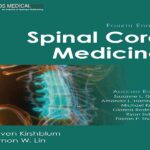



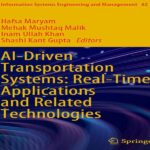

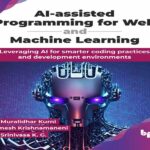

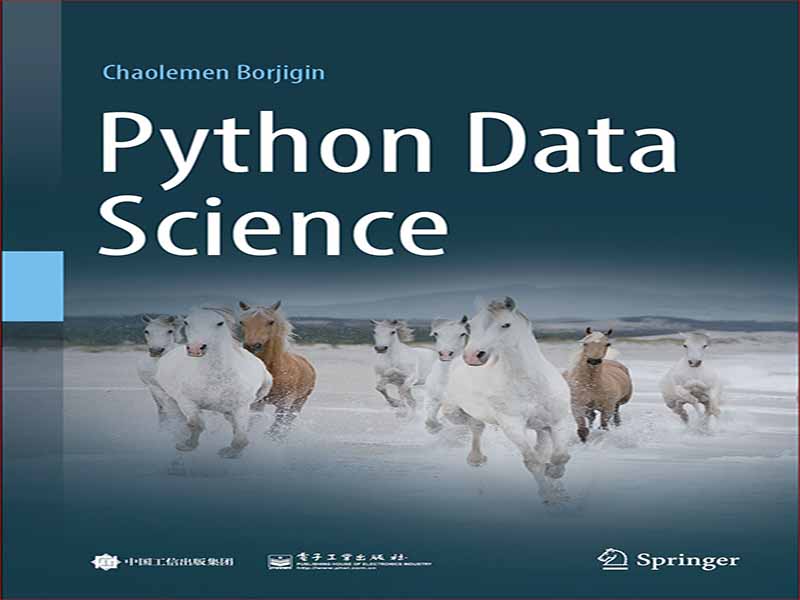






















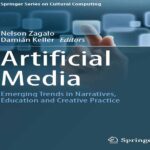
نظرات کاربران